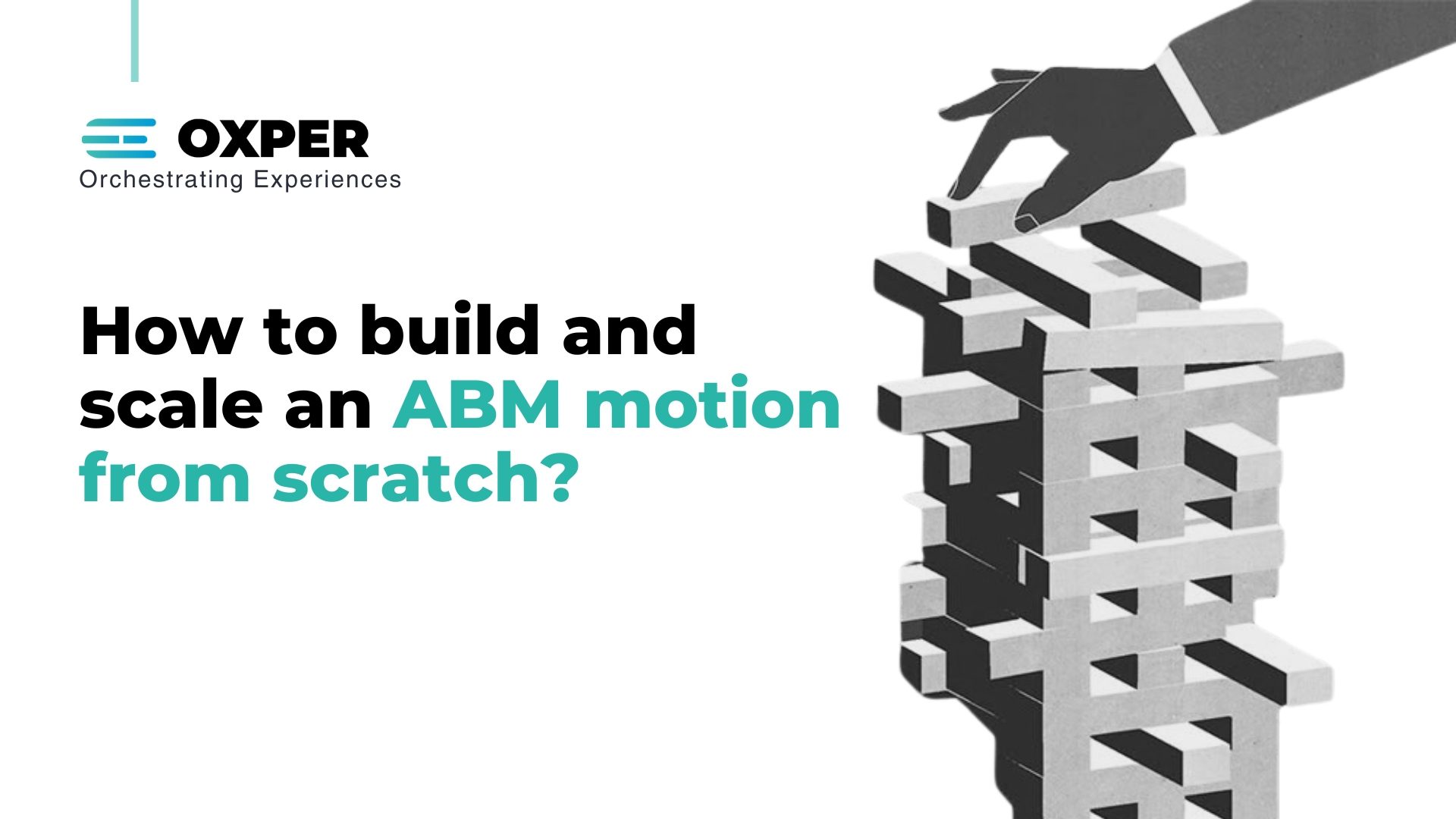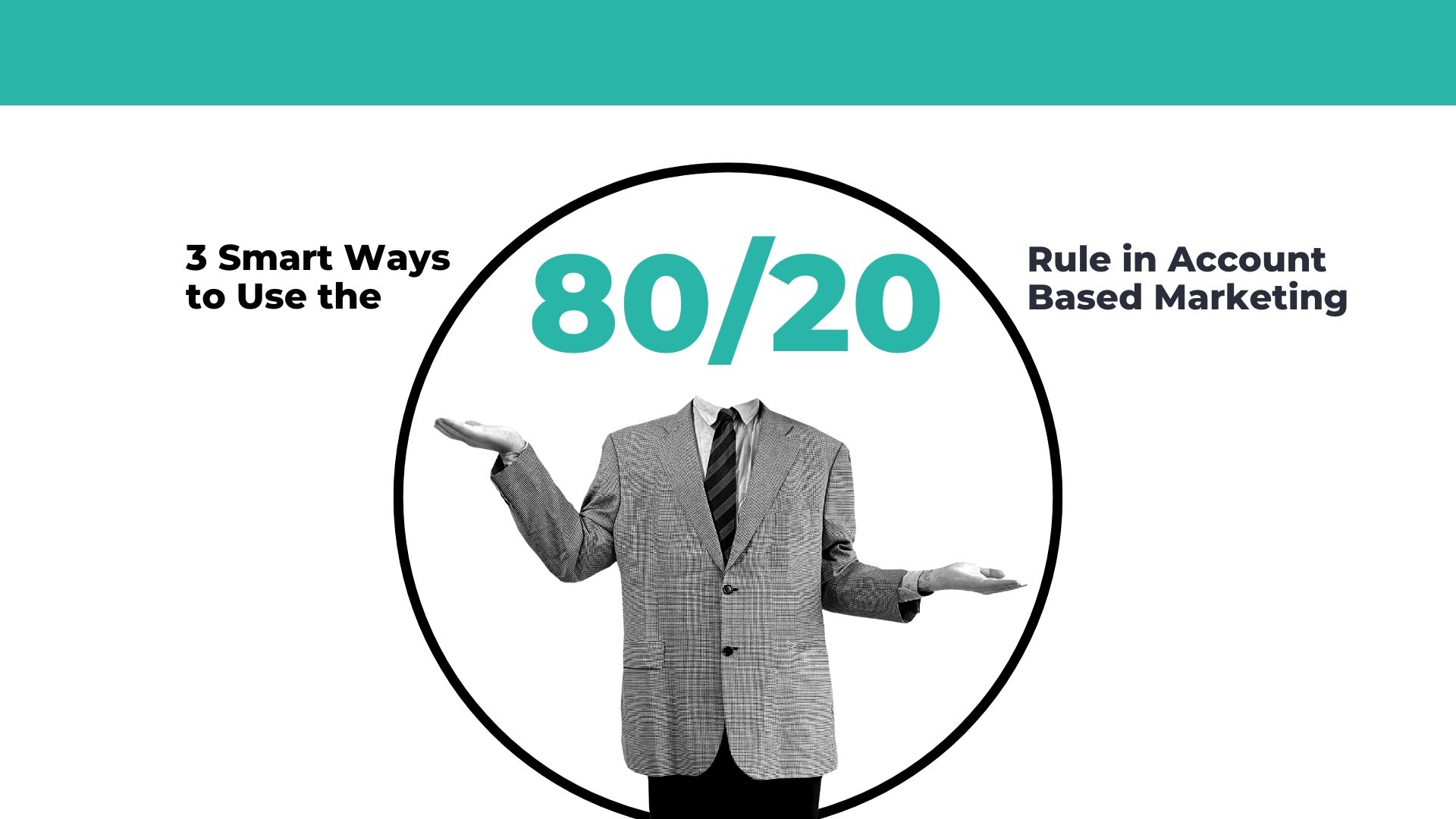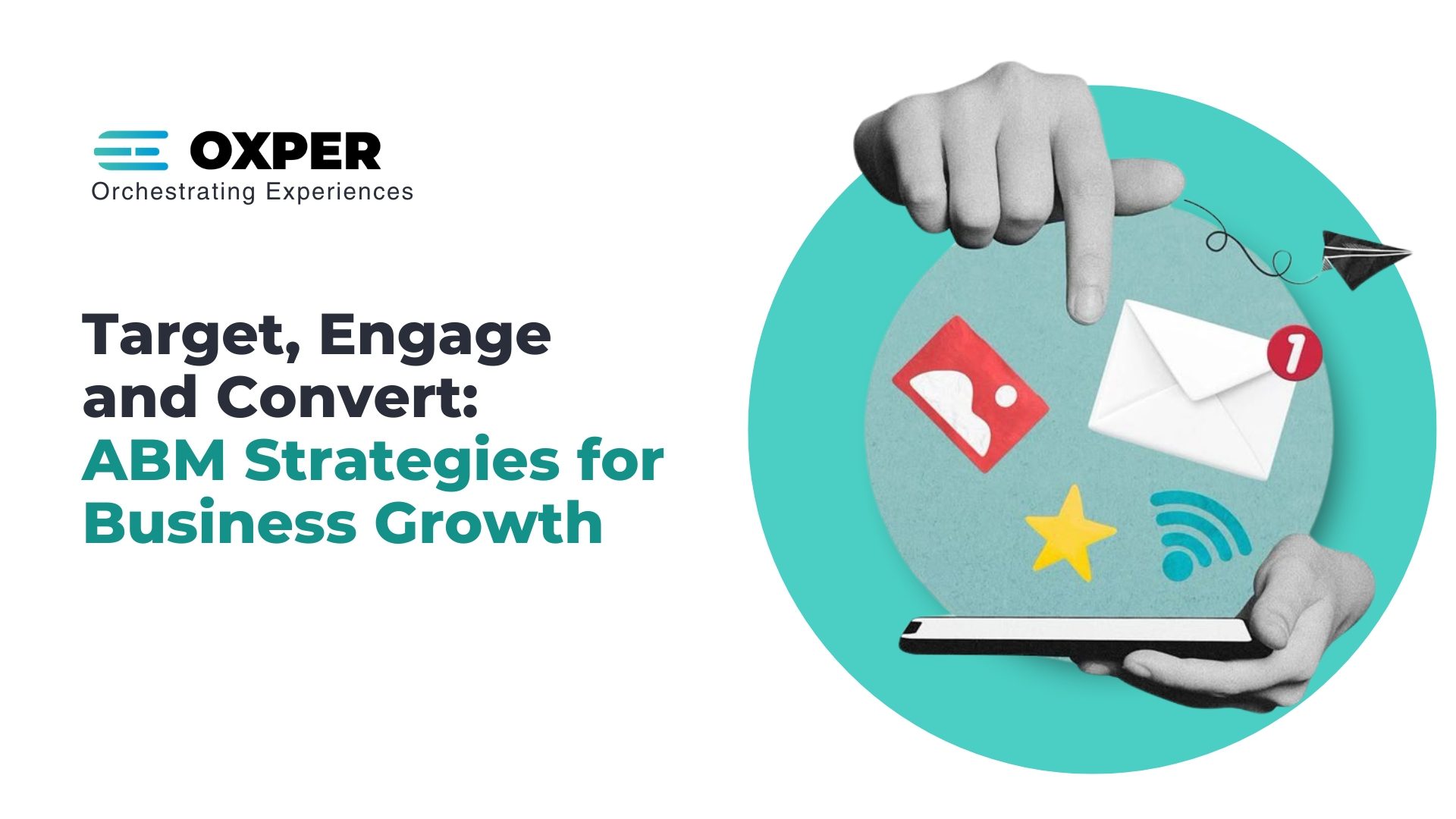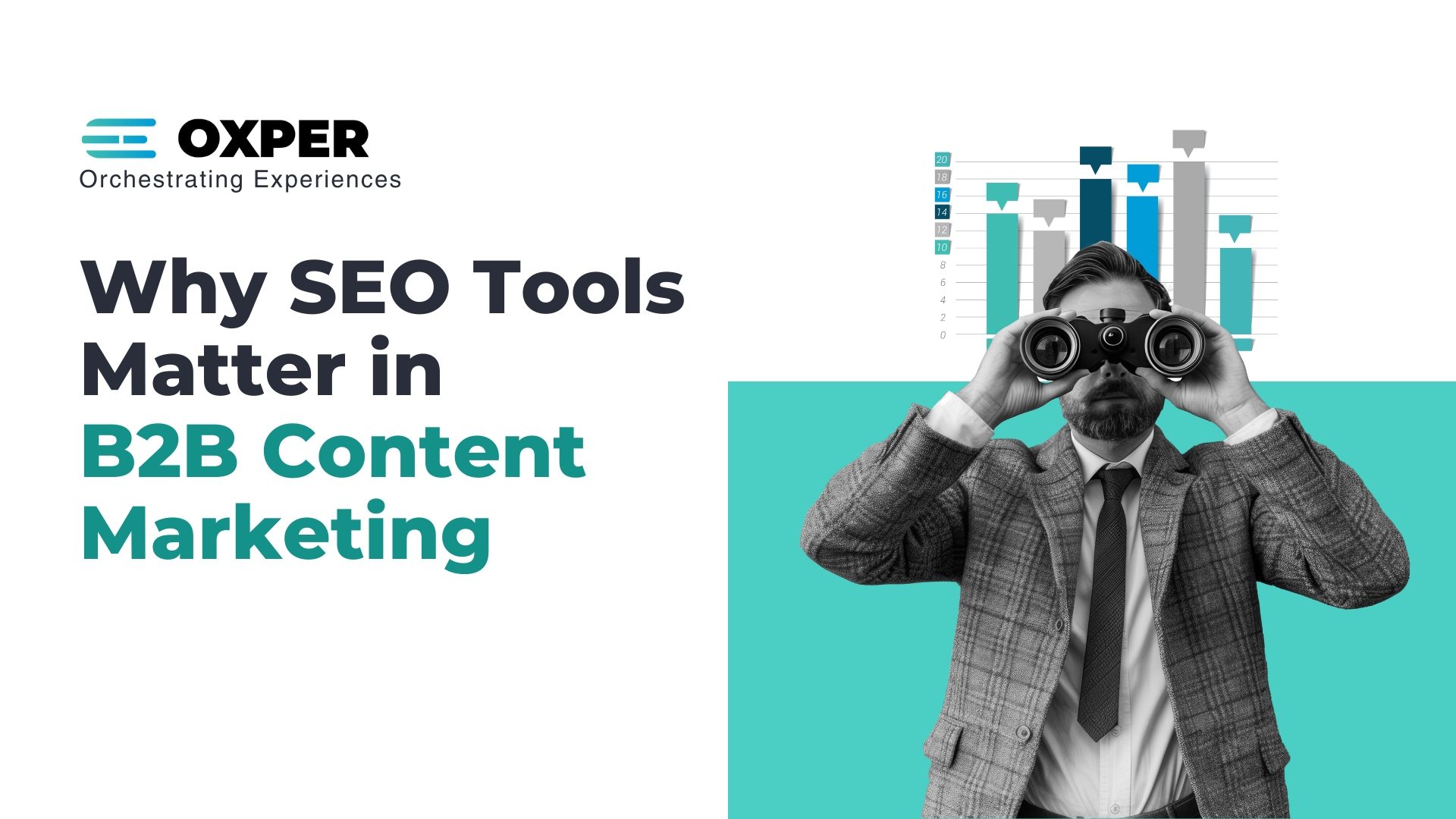Introduction
Imagine a world where B2B marketing agencies could be selling to their prospects directly. You could clarify your messaging for each of your prospects and they connected well with your brand. Don’t you think the sales process could become much easier? No wastage of time, energy, and resources and deriving results head-on.
With the vast number of agencies that have started ABM marketing, we realize how Account-based marketing allows you to focus your efforts on specific high-value accounts, resulting in improved conversion rates, stronger customer relationships, and increased revenue.
Being a B2B marketing agency, how can you build and scale an ABM marketing strategy from scratch with the help of b2b account based marketing agency? If that was the question we were solving at Oxper, this is what we would do.
How to align my ABM team?
Successful ABM starts with unity. Start aligning your marketing, sales and customer success teams. Bring together representatives from each team to define your ABM strategy, establish clear lines of communication, and ensure everyone is working towards a common objective.
How to target in ABM marketing?
Now you need to identify and select target accounts strategically. Defining your Ideal Customer Profile (ICP) is a great way to start. And conduct thorough market research to create a list of high-value accounts that align with your ICP.
Does a lean team play an important role?
Key roles for ABM success include account strategists, content creators, data analysts, and marketing automation specialists. Ensure your team members possess the necessary skills or provide training and upskilling opportunities to bridge any gaps.
How important is tech in ABM marketing?
While technology should never be the sole focus, having a minimal viable tech stack is essential for ABM execution. B2B marketers don’t need to purchase expensive software right off the bat but they need to invest in tools that align with their goals and help them streamline their ABM efforts. Fact: Our stack costs less than $500 a month.
What is the best way to start ABM marketing?
Rather than trying to tackle everything at once, start with choosing a pilot project that aligns with your overall ABM strategy and select a small set of target accounts to focus on. By starting small, you can minimize risks, learn from your experiences, and iterate before scaling your ABM motion. For instance, instead of launching a mass ABM campaign, use the 1-1-1-1-10 principle: 1 marketer – 1 SDR – 1 geo market – 1 vertical – 10 accounts max.
Is the messaging important?
A solid foundation is what you need here. Develop compelling account-specific messaging that resonates with your target accounts. Use data and insights to tailor your content, ensuring it speaks directly to their pain points and aspirations.
How to warm up ABM accounts?
Your base is set. It’s time to set up the pillars. Warming up your target accounts with personalized emails, relevant content, and social media interactions. This stage will help you with brand awareness and implement the next step better.
How to launch an ABM campaign?
It’s time to activate your ABM marketing campaigns. Deploy personalized ads, targeted email campaigns, and customized content that speaks directly to the pain points and goals of each target account. At Oxper, we leverage expertise i.e., marketing automation tools to streamline and ensure consistent messaging.
Is engagement necessary in ABM marketing?
ABM marketing is a two-way street. You actively need to seek feedback and engage with your target audience. Then leverage the data and insights gained from these interactions to refine your campaigns and further personalize your messaging.
Should I set processes in ABM?
Time to operationalize the process. Make sure ABM is integrated into ongoing marketing campaigns, and you’ve documented your strategies, processes, and best practices to create a playbook that can be replicated and scaled across your organization.
How to scale ABM campaigns?
“Scaling is only difficult when you grow your organization like a tower instead of a city”. Expand your target account list, replicate successful campaigns, and allocate additional resources to support your growing ABM programs.
How to integrate ABM with other marketing campaigns?
Align ABM with your broader marketing initiatives with a unified approach across all touchpoints. It’s simply this: By integrating ABM into your overall marketing efforts, you can amplify its effectiveness and create a remarkable customer experience.
Conclusion
Building an ABM marketing campaign from scratch is a tough, but exciting journey. Of course, you need to remember that ABM is not a one-time project but a continuous journey that requires you to adapt to a new goal. But having customers in mind will always help you to build a strong relationship and drive meaningful engagement with them. That’s the power of ABM marketing and that is exactly what we’ve helped our clients achieve recently.
Ready to see how ABM can work for your business? Get in touch with us to start your journey.
FAQS
1. What is an ABM strategy?
An ABM (Account-Based Marketing) strategy is a highly focused B2B marketing approach where marketing and sales teams work together to identify high-value target accounts and create personalized campaigns for each account. Instead of casting a wide net, ABM aligns efforts around specific companies or decision-makers within those companies to drive engagement, conversion, and revenue.
2. How does ABM differ from traditional marketing?
ABM differs from traditional marketing in its precision and personalization:
- Traditional marketing targets broader audiences using generalized messaging.
- ABM narrows down the focus to individual accounts and delivers tailored content and outreach based on the unique needs and pain points of each account.
While traditional marketing aims for volume and reach, ABM emphasizes quality and relevance to close high-value deals faster.
3. Why is ABM important for B2B marketing?
ABM is especially valuable in B2B because:
- It aligns sales and marketing for better conversion and ROI.
- It focuses efforts on high-value accounts, increasing deal size.
- It enables personalized experiences that resonate more with decision-makers.
- It reduces waste by targeting companies most likely to convert, rather than appealing to a broad, less-relevant audience.
In short, ABM improves efficiency, boosts engagement, and shortens sales cycles—critical factors in complex B2B sales.
4. How do you identify ideal target accounts in ABM?
To identify ideal target accounts, start with your Ideal Customer Profile (ICP)—a representation of companies that would benefit most from your offering and provide the highest value in return. You can then:
- Analyze your best existing customers.
- Use firmographic data (industry, size, revenue).
- Leverage intent data to find companies actively researching your solutions.
- Collaborate with sales teams to spot strategic opportunities or named accounts.
5. What data points are crucial for selecting target accounts?
Key data points include:
- Firmographics: Company size, industry, revenue, location.
- Technographics: Tools and technologies the company uses.
- Intent Data: Online behavior indicating interest in your product category.
- Engagement History: Past interactions with your brand (emails, webinars, site visits).
- Buying Signals: Job changes, funding rounds, company expansion.
- Fit Scores: How closely an account aligns with your ICP.
These data points help ensure you’re targeting accounts with both the need and the potential to convert.





